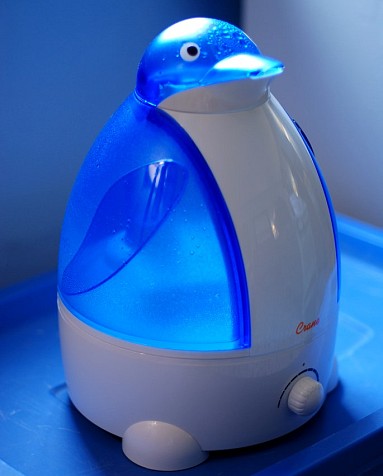Humidifier, Dehumidifier -- Which Do You Need?
Too dry in winter, too damp in summer … does this describe the air in your house? If, like Goldilocks, you're looking for something that's just right, a humidifier or dehumidifier may do the job.
Ideal Relative Humidity
The ideal relative humidity inside your home is 30-60 percent, depending on the season. You can measure it with a device called a hydrometer. In winter, use of your heating system is likely to bring the humidity down to 30-40 percent, while in summer, it may rise as high as 60 percent. When relative humidity sinks below 30, a humidifier (which adds moisture to the air) will make your family more comfortable, while a dehumidifier (which extracts moisture) will do the trick if it's over 50. You may well need both a humidifier and a dehumidifier on hand, using one or the other according to the time of year.
Relative Humidity and Human Health
Human health is often affected by extremes of relative humidity in the atmosphere, causing symptoms which may be alleviated by mechanical means to adjust the humidity level up or down.
If the air in your home lacks enough moisture, dry skin or other forms of dermatitis (chapped lips, peeling or itchy skin, eczema, and other rashes) might be the first sign that you need a humidifier. For symptoms such as congestion, dry sinuses, nosebleeds, sore throat, or persistent cough, your physician may well recommend humidifying the patient's room to lubricate irritated breathing passages.
Overly moist air can exacerbate asthma and allergy symptoms. In the summer, your air conditioning system should sufficiently dehumidify the air, but you could need a dehumidifier in spring and fall when you're not operating your HVAC.
Relative Humidity and Your Home
When your home is too dry, natural materials such as wood or leather are especially affected. Use a humidifier to bring the relative humidity up to 40 percent and prevent cracking of leather furniture or musical instruments, as well as loosening of windowpanes in wooden frames.
An excess of moisture fosters mold and mildew development, especially in small, poorly vented, or underground spaces, such as bathrooms, showers, finished basements or cellars, laundry rooms, and the area under the sink. The first indications of dampness may be wet stains, window condensation, musty smell, or rotting wood. Use a dehumidifier to alleviate the problem, but you must also find the source, repair it, and apply anti-mold paint. In mild climates like Florida's, dehumidifiers are also useful for Orlando pest control, limiting the growth of silverfish, cockroaches, and dust mites.
Choosing a Humidifier or Dehumidifier
Look for a humidifier that is the right size for the part of your house where you plan to use it. Choose from among tabletop, tower, console, and whole-house (integrated into your HVAC system) versions. A hot mist model has the advantages of low price and a medicine cup where you can place essential oils or other medicinal extracts to be diffused in the vapor. The cool mist type is noisier but carries less risk of burn, making it safer for children's rooms. Useful features include a digital display, timer, adjustable humidity level, and automatic shut-off.
When buying a dehumidifier, once again select the correct capacity for your needs -- portable or whole-house, with various bucket sizes. In addition to an adjustable humidistat, auto shut-off, and digital display, look for a drain hose connector, built-in pump, automatic defrost, and multispeed fan.
For either device, choose a model with a safety listing and Energy Star certification. Make sure that it will be easy to clean on a regular basis to prevent buildup of mold and bacteria.
Laura Firszt writes for networx.com.
Updated March 14, 2018.
Looking for a Pro? Call us (866) 441-6648

Electrical Average Costs
Electricians Experiences

Oil Furnace Maintenance Prepares Us For A Cold New England Winter

Furnace Replacement So Our Heat Won’t Fail In The Winter Cold




